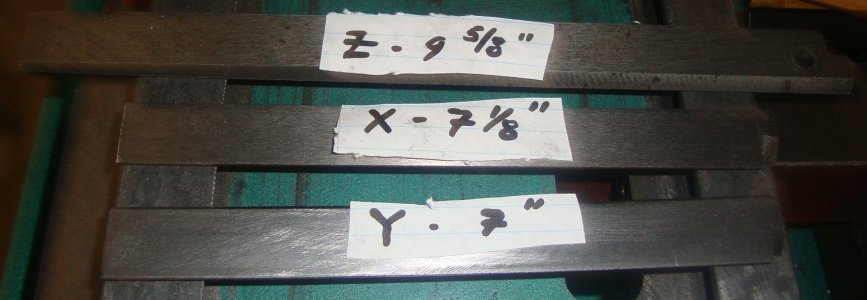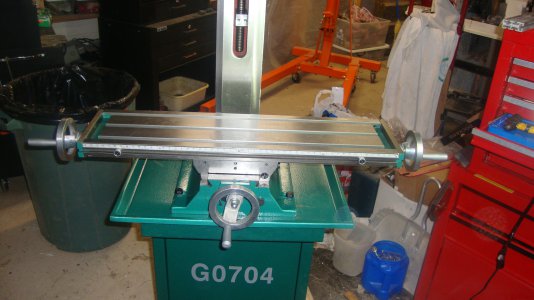OK I know you're out there - all you Grizzly G0704 Mill owners. I'm more than a bit embarassed but I must be doing something wrong.
I have completely disassembled the mill to clean and adjust everything. I reassembled the X-Y saddle onto the base, adjusted for backlash, inserted the Y-axis gib, and the saddle glides back and forth very nicely. No such luck with the table. When trying to put the table onto the saddle, I can't completely insert the X-axis gib. The X-axis gib is approximately 7 inches long which is the "X" dimension of the saddle. I can insert the first 5.5 inches and then the table, gib and saddle seize up. This is not by lack of gentle persuasion. In fact, at one point, I tried to tap the end of the gib with a small brass drift. Bad idea! The gib got jammed between the table and saddle and would not budge. I eventually had to use a piece of brass rod to drive it out from the opposite end. I hope I'm doing this the correct way. First I engage the table into the saddle dovetails, center the table on the saddle and then insert the narrow end of the gib from right to left.
Just to clarify, at this point both X-axis gib adjustment screws are out and the X-axis leadscrew has not yet been installed.
I really can't proceed until I get this problem solved.
Thanks in advance.
Frank
I have completely disassembled the mill to clean and adjust everything. I reassembled the X-Y saddle onto the base, adjusted for backlash, inserted the Y-axis gib, and the saddle glides back and forth very nicely. No such luck with the table. When trying to put the table onto the saddle, I can't completely insert the X-axis gib. The X-axis gib is approximately 7 inches long which is the "X" dimension of the saddle. I can insert the first 5.5 inches and then the table, gib and saddle seize up. This is not by lack of gentle persuasion. In fact, at one point, I tried to tap the end of the gib with a small brass drift. Bad idea! The gib got jammed between the table and saddle and would not budge. I eventually had to use a piece of brass rod to drive it out from the opposite end. I hope I'm doing this the correct way. First I engage the table into the saddle dovetails, center the table on the saddle and then insert the narrow end of the gib from right to left.
Just to clarify, at this point both X-axis gib adjustment screws are out and the X-axis leadscrew has not yet been installed.
I really can't proceed until I get this problem solved.
Thanks in advance.
Frank



